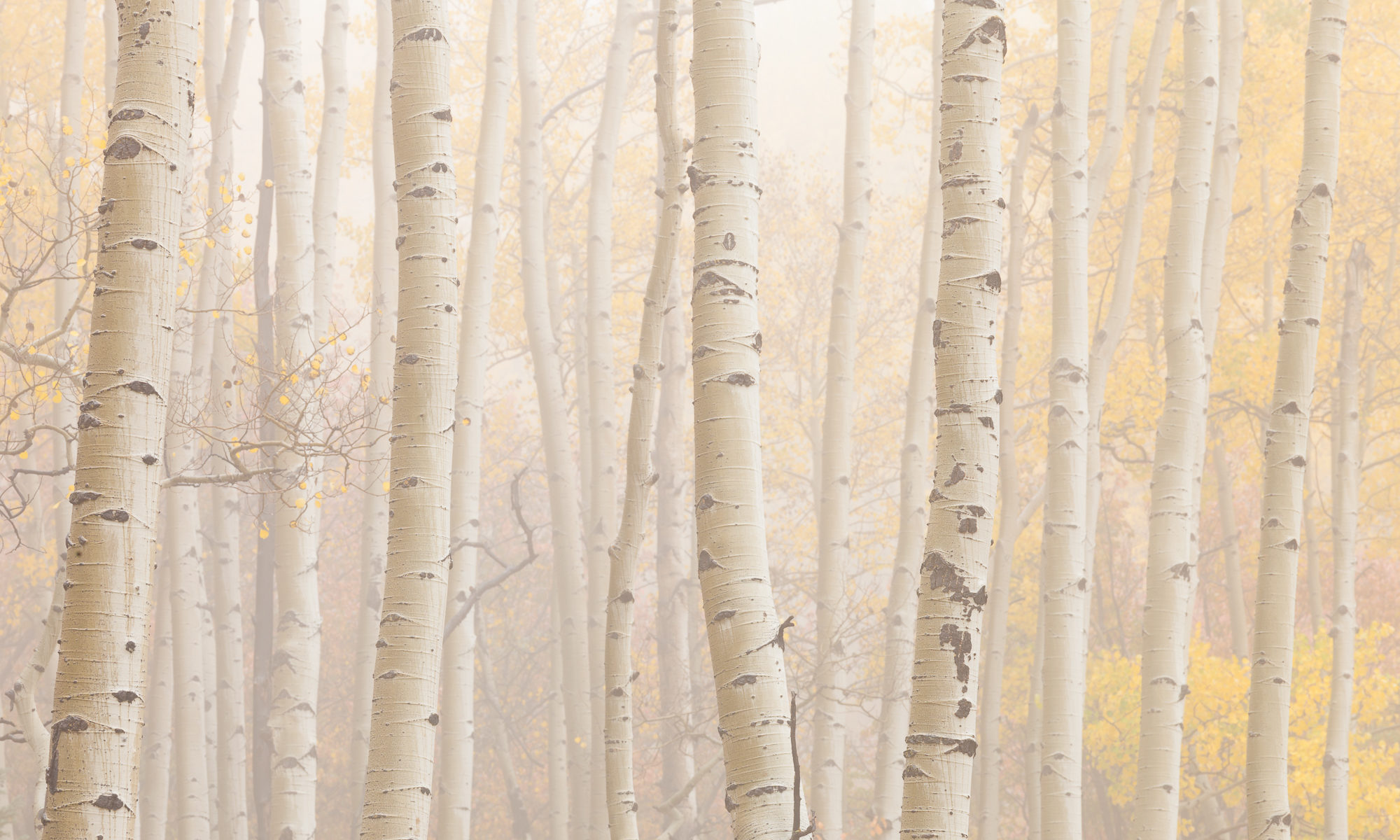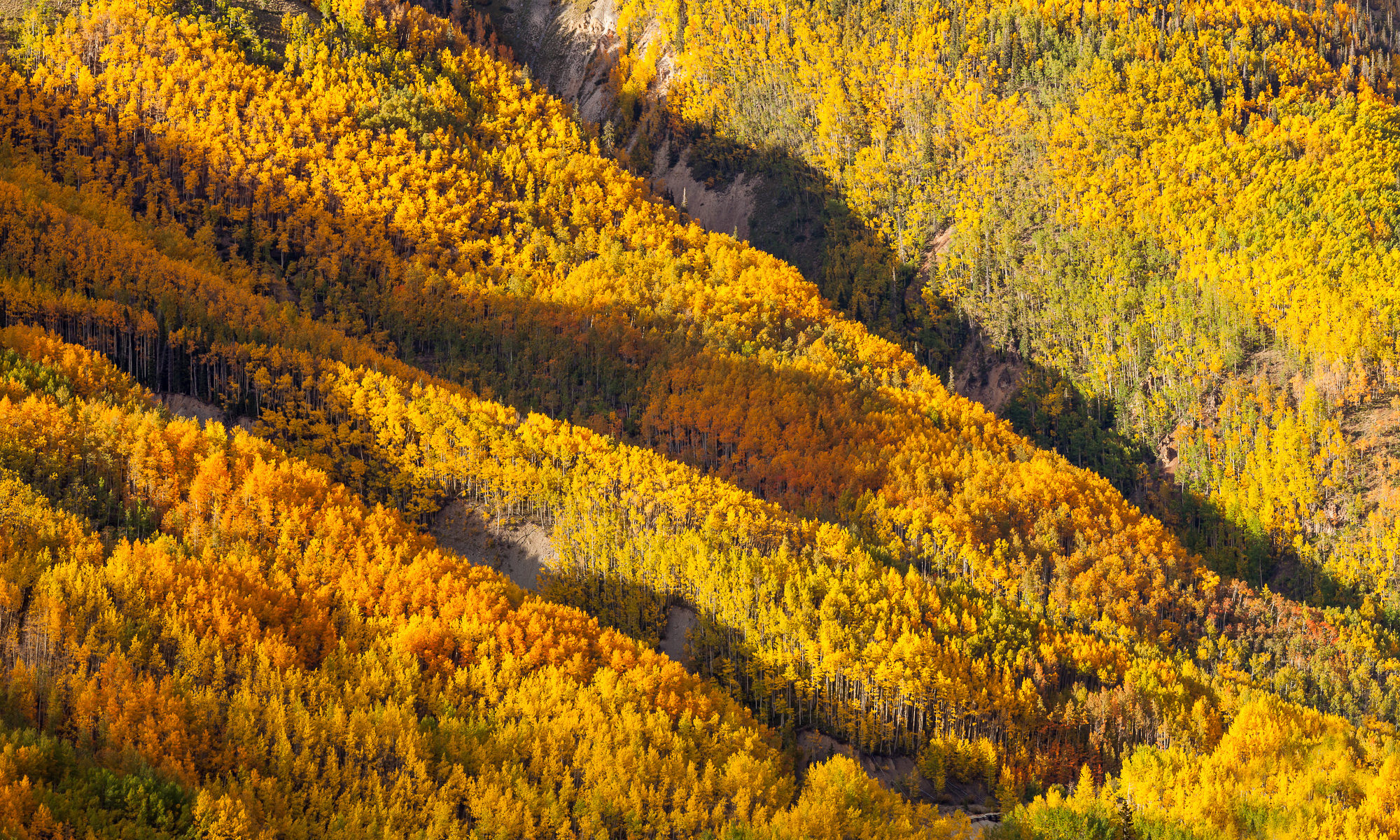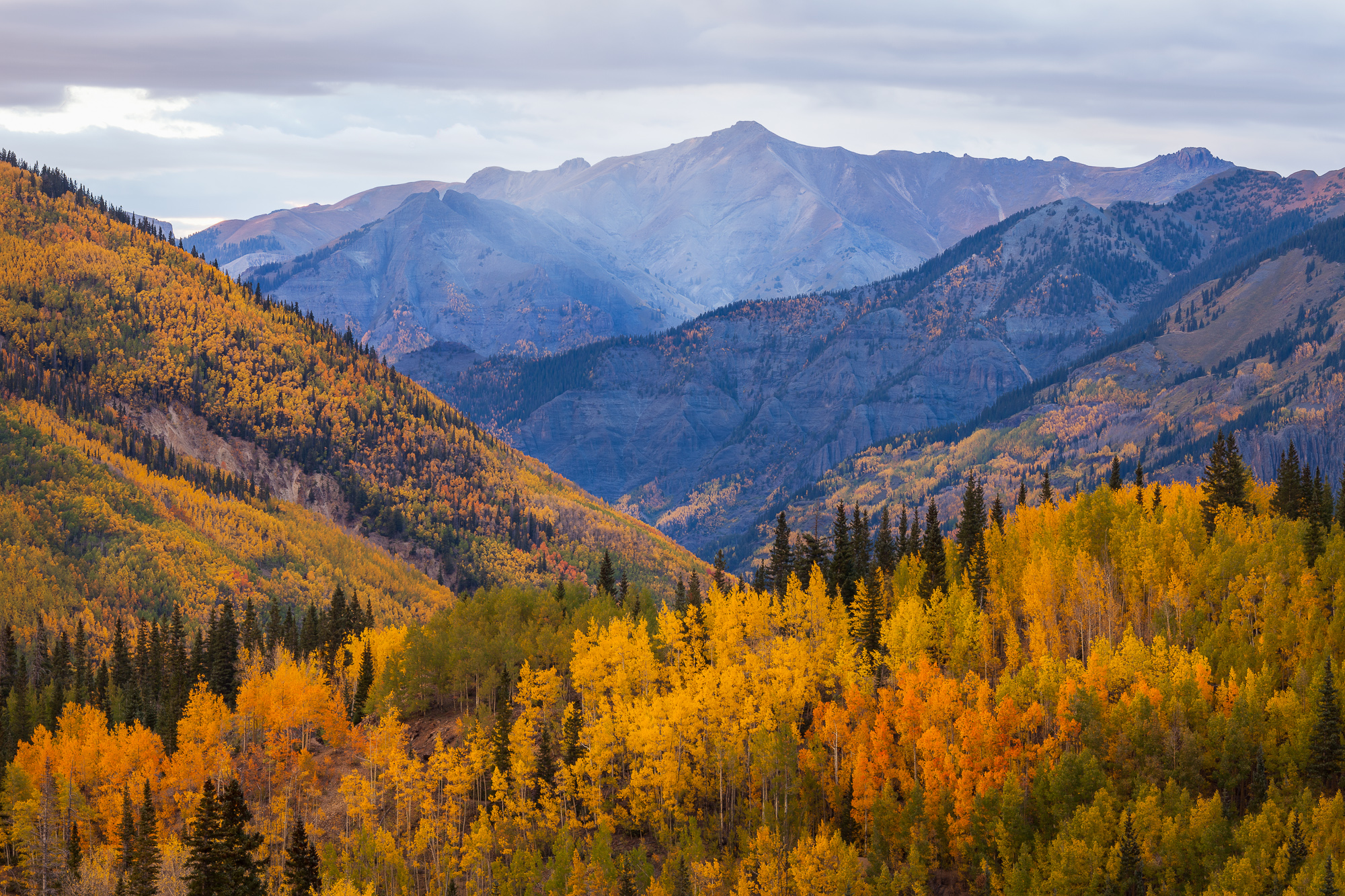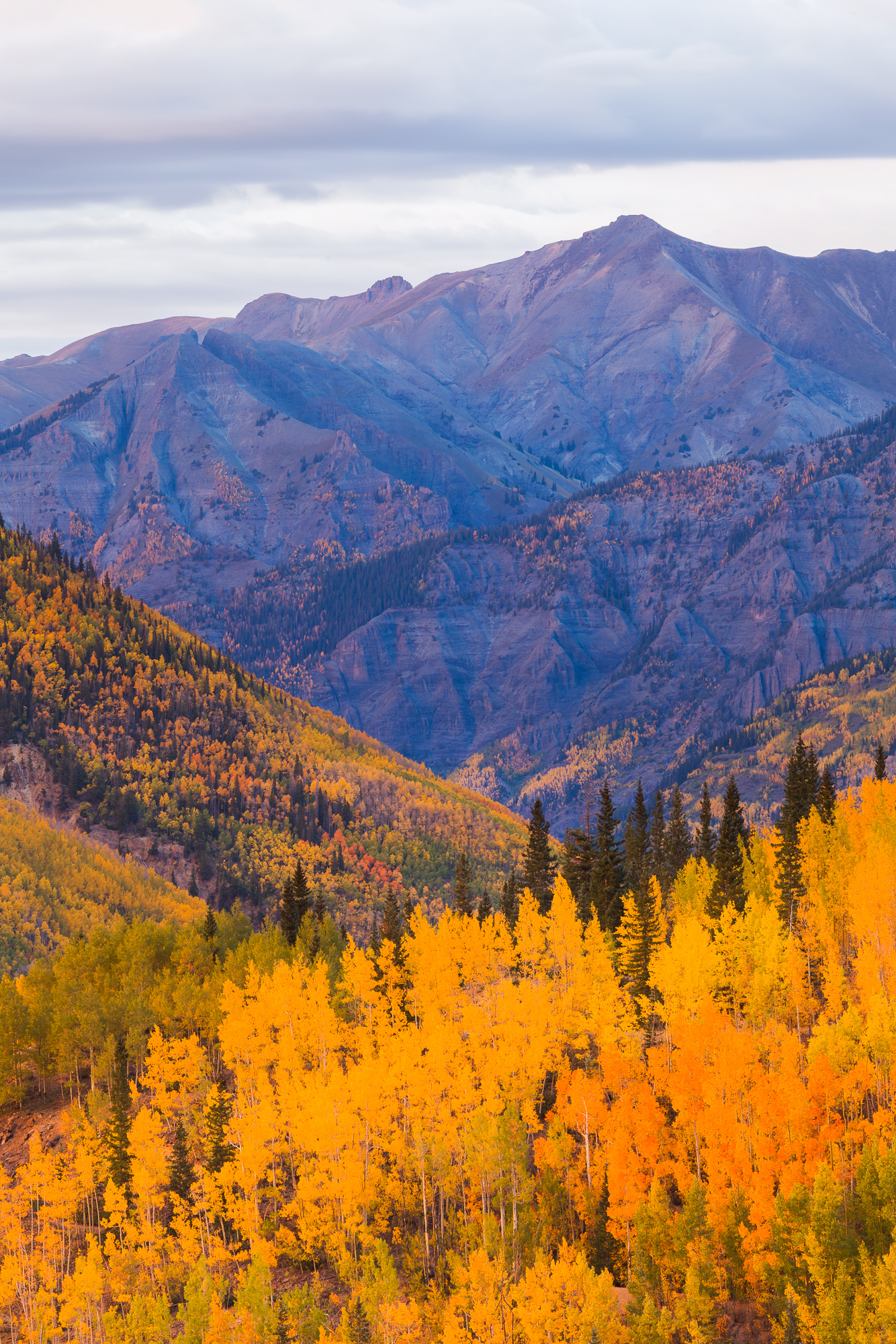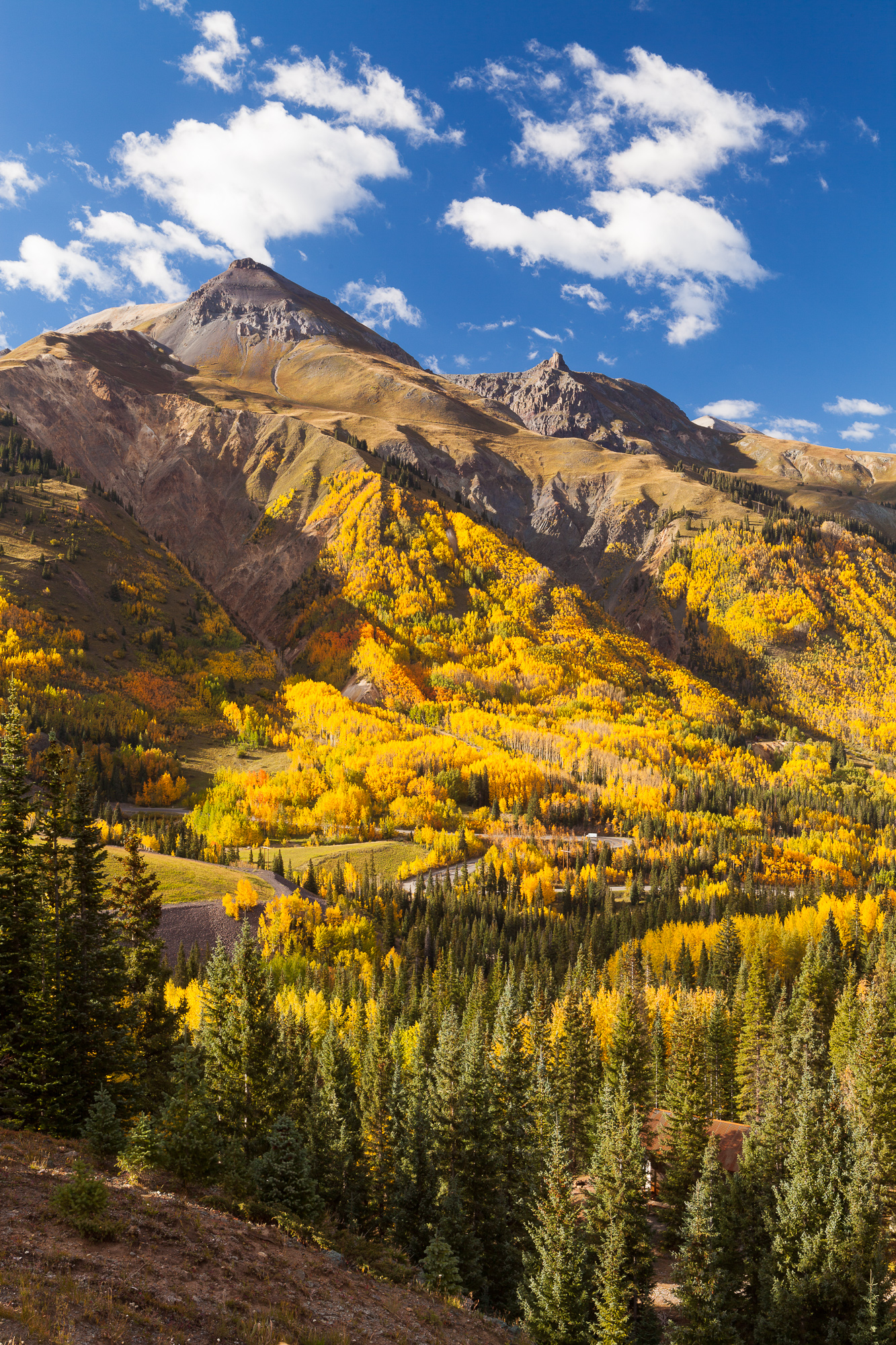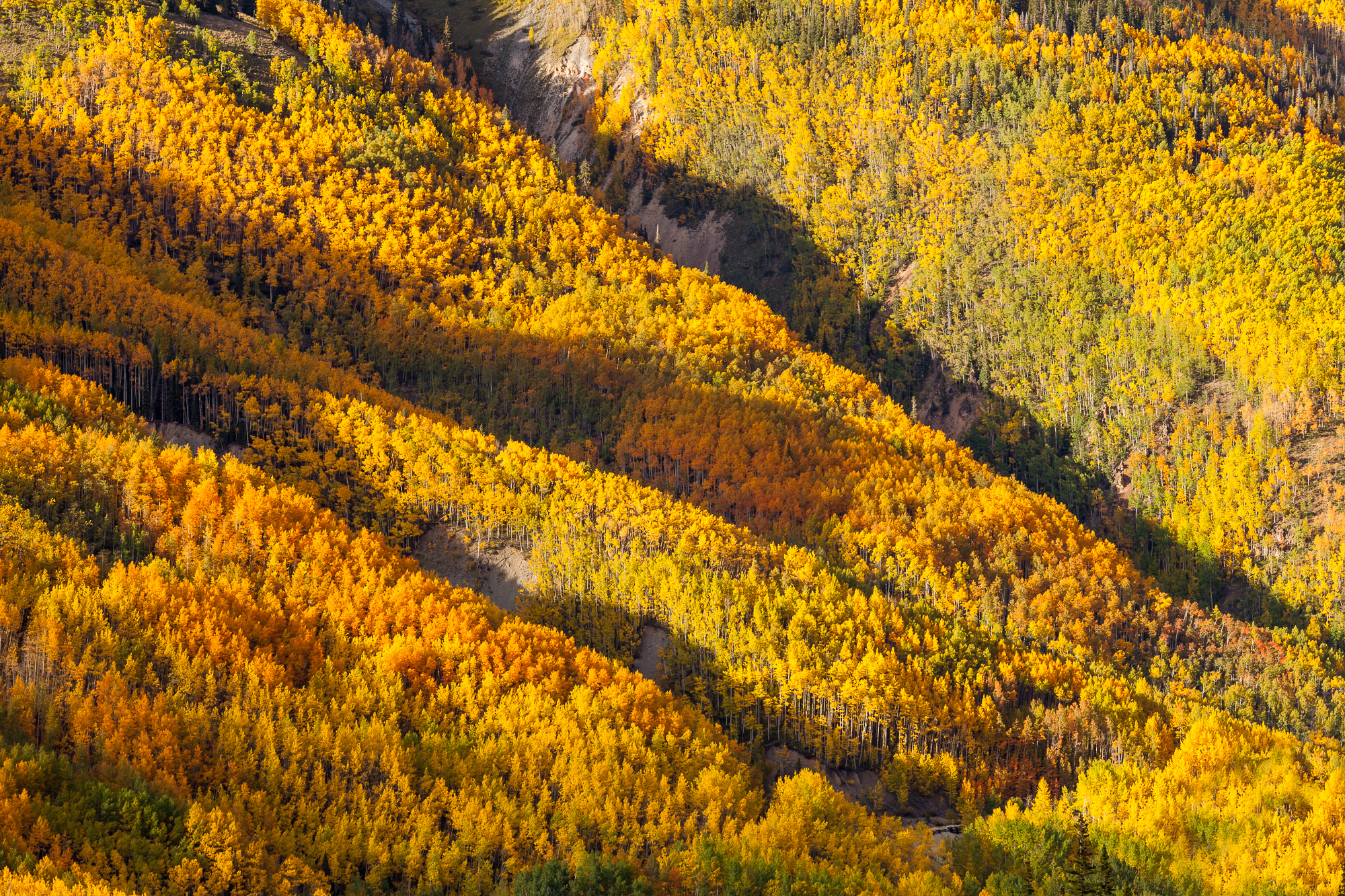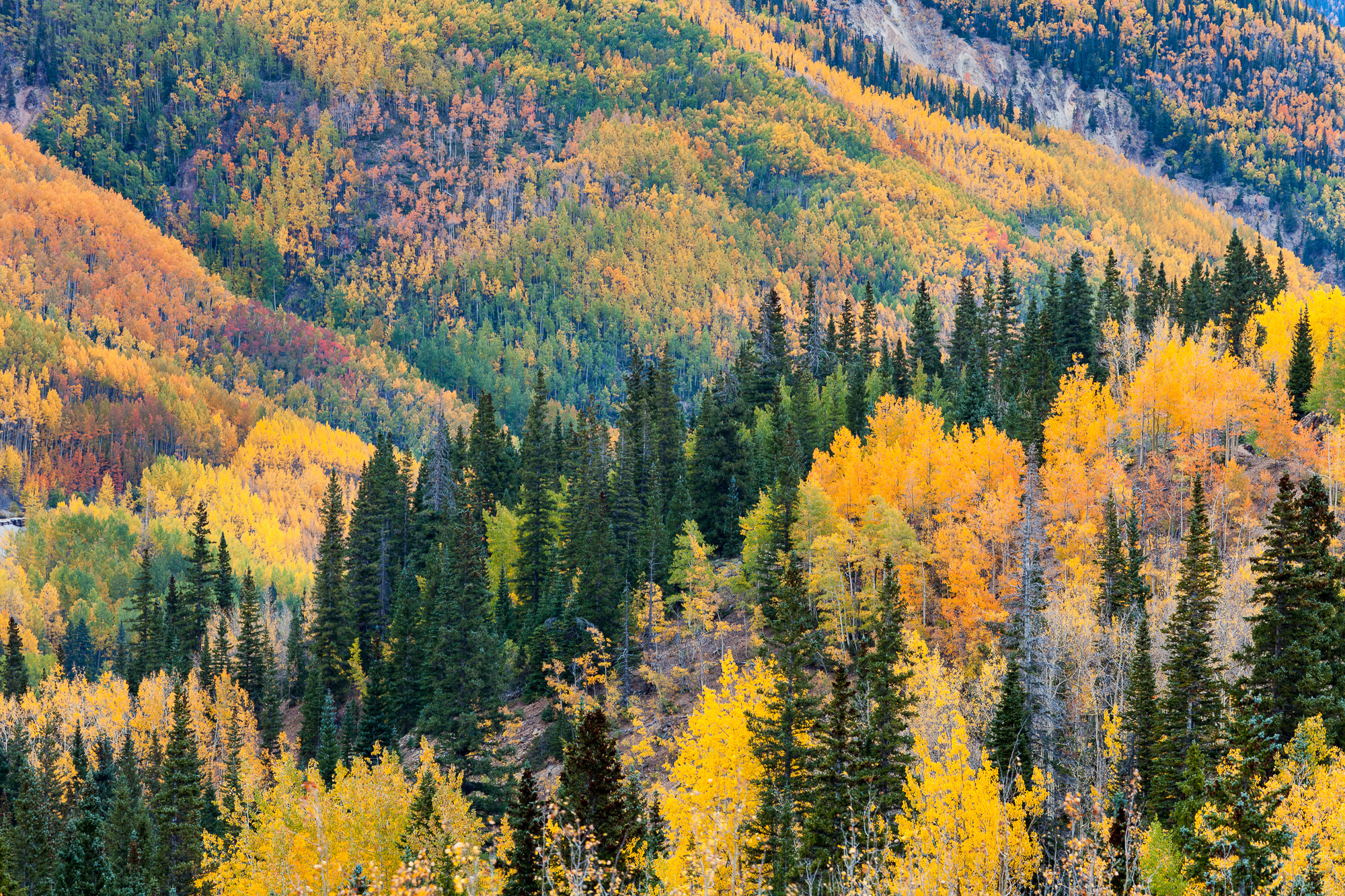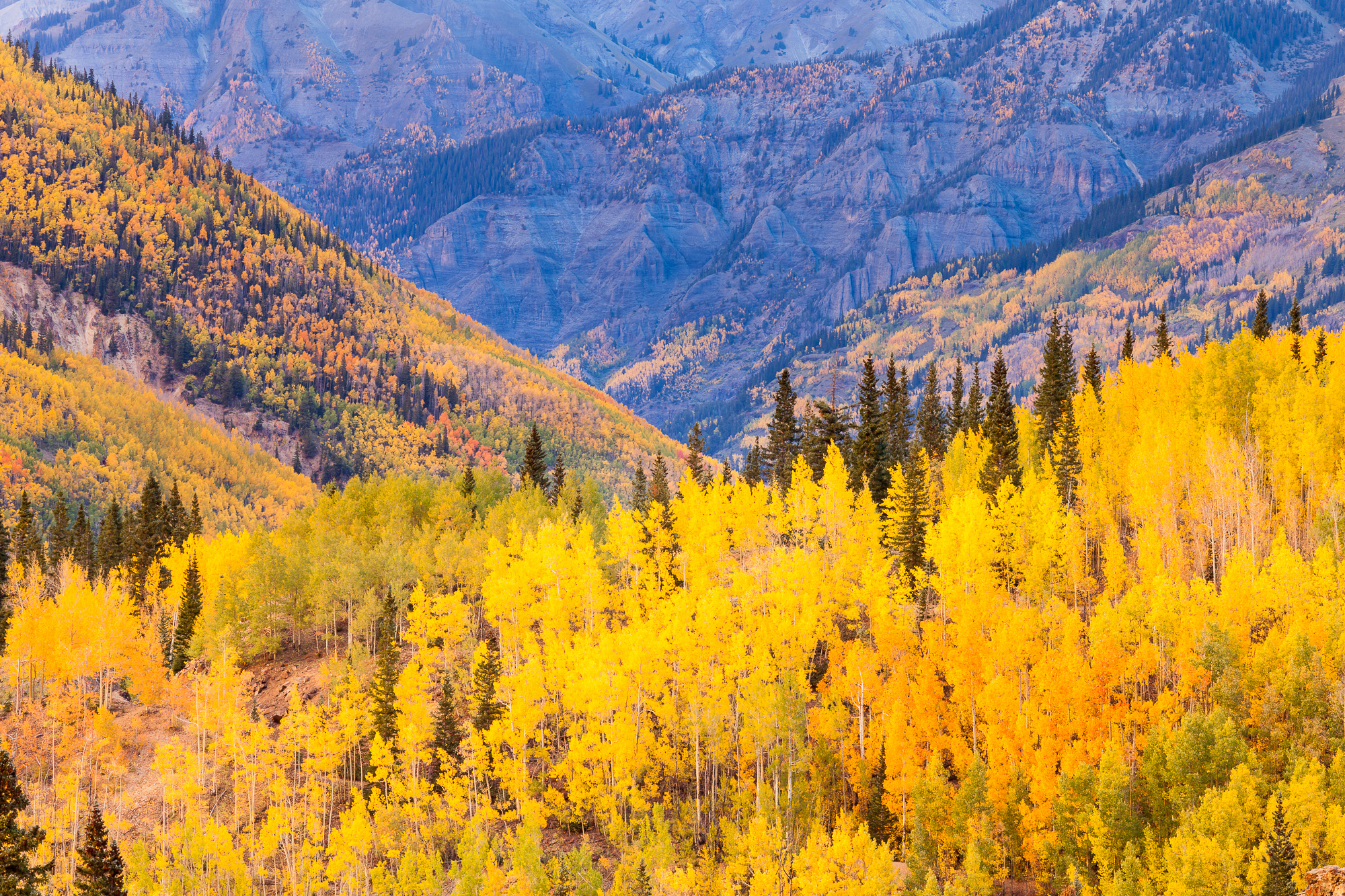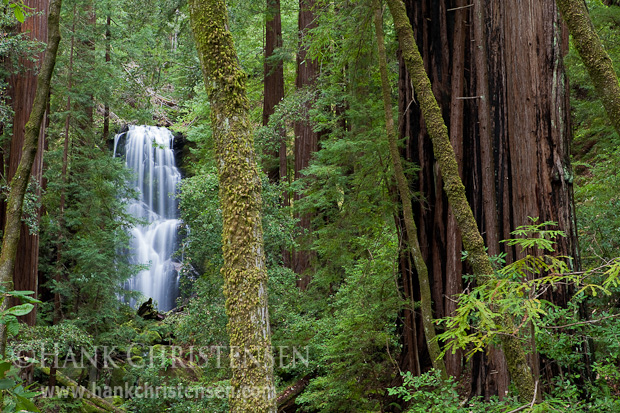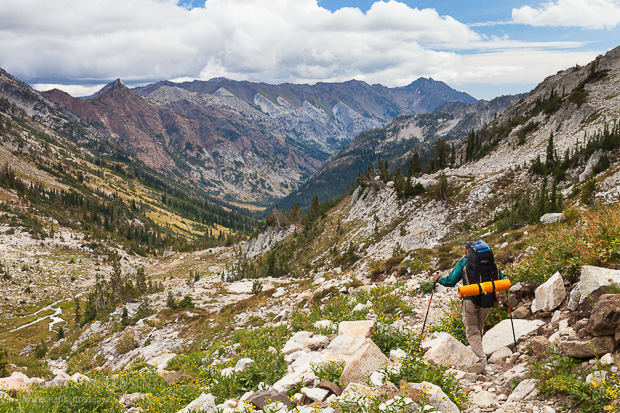One goal of nature photography is to take the chaos of a wild landscape, and using nothing but the perspective of the rectangle of your camera’s view, to simplify and distill the scene into a singular message. One of the most chaotic environments in which I shoot regularly is a forest. Once you combine tree trunks, branches, leaves, and vegetation, you are often presented with quite a mess of a scene. Finding patterns and removing the extraneous elements can be a huge challenge.
One technique I use to help the viewer see the intended patterns I am trying to convey is to use and pay careful attention to the separation of the main elements of my photo. Here are several forest scenes that I shot on a recent trip to the San Juan mountains in Colorado. With each, I spent a great deal of time in the field moving the camera and field of view to just the right location, to make sure the trees were not merging with each other in ways that detracted from my vision.
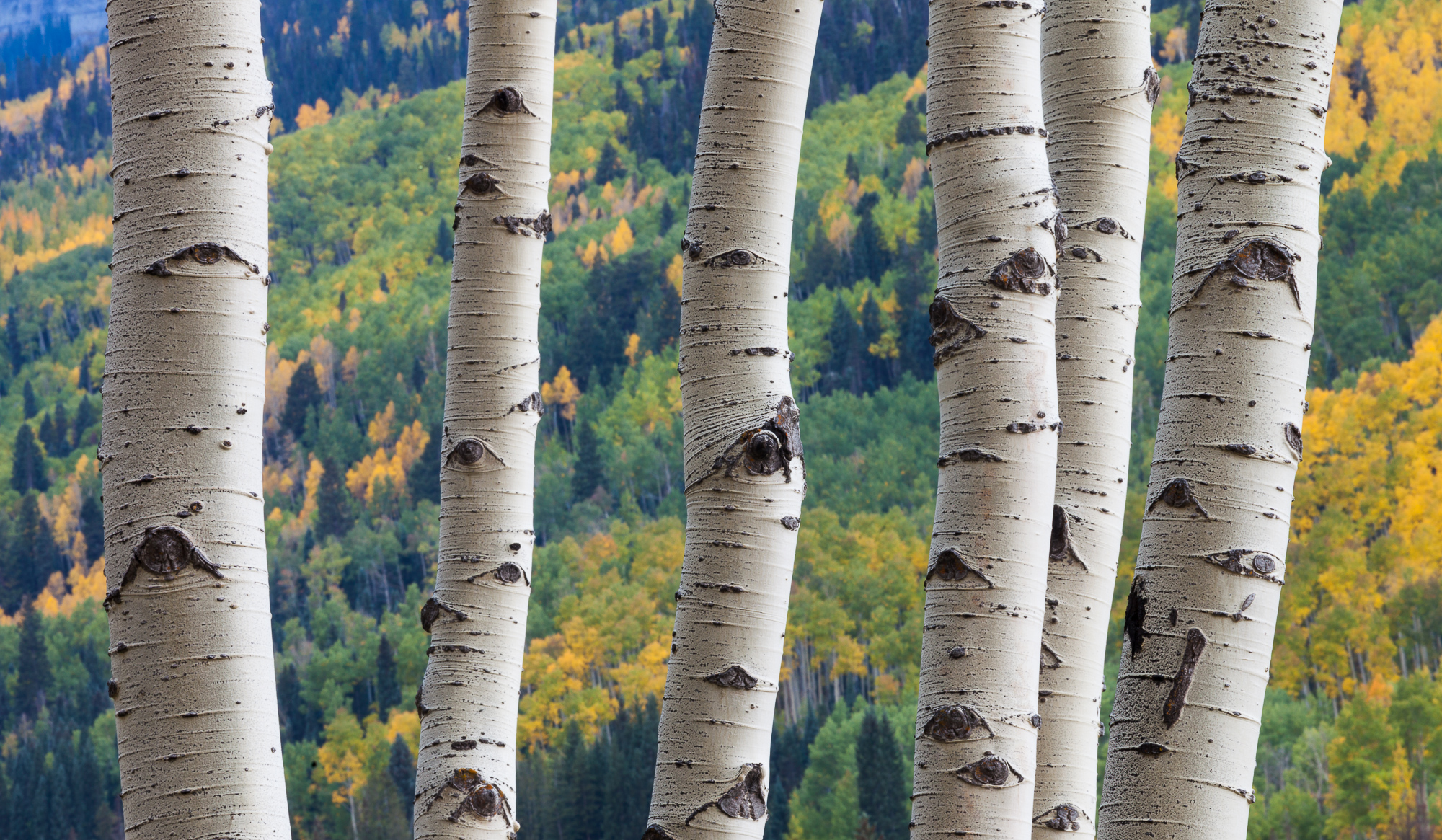
When I took this photo, I was in a location with a dirt road running along one side of a narrow valley. The opposite side of the valley was covered with a kaleidoscope of fall colors – a beautiful display. Above the road on my side of the valley was a stand of aspen, with perfect bone-white trunks. I knew the shot I was looking for – now it was a matter of hoping I could find the right composition.
I moved up the steep slope and into the aspen grove. Using a medium to long lens and moving up-slope above the trees, I could shoot straight through a select group of trunks, using the beautiful colors from the other side of the valley as my backdrop. Now was the truly challenging part – I needed to find just the right group of trees that showed a consistent pattern of separation from one another. I finally found some good candidates and spent a while getting my tripod into the right location. Working on such a steep muddy slope made the work slow and arduous. I slipped more than once, preferring to let my clothes take the brunt of the mud rather than my expensive gear.
In the photo, you’ll notice that the spacing between the left and right edges and the left and right most trees is the same. I tried to keep similar spacing between each tree, so as to repeat this pattern across the frame. The trouble trees are the three right most; but after working with them a while, I began to really like how they broke the perfectly even pattern. It brings just a touch of wildness into the photo, hinting at the chaos of this forest.
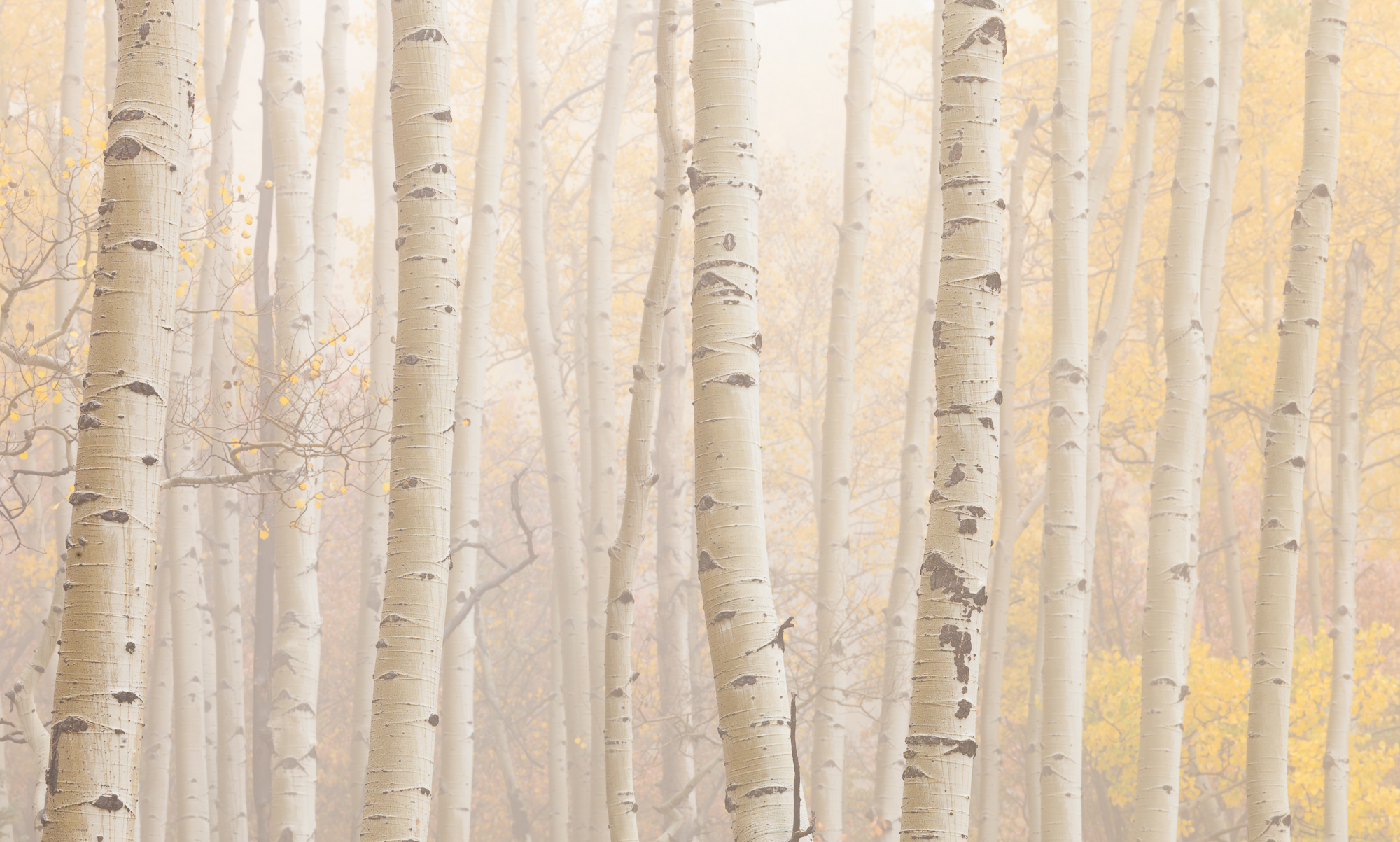
Another great natural phenomenon to take advantage of to help simplify a scene is fog. This can work especially well to simplify a forest scene, and it worked very well with aspen. Again, I worked on creating an even spacing across the closest trees, knowing they would be rendered in the photo with the most contrast. With these photos, it is especially important to pay very careful attention to the edges of the frame.
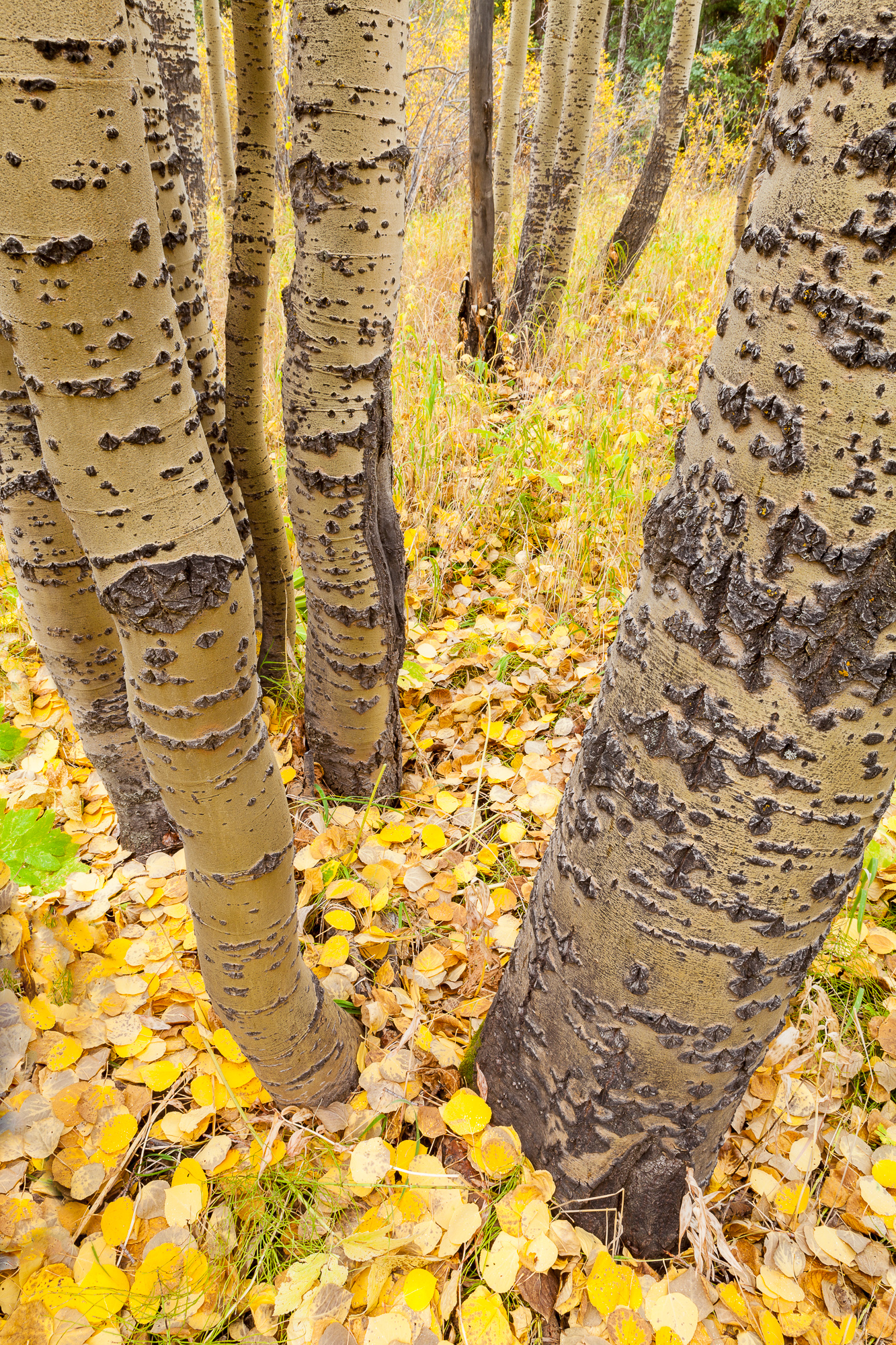
This last photo was perhaps the most difficult of the three. I saw the foreground cluster of trees, and as I moved closer, I saw a repeating cluster in the background, a perfectly placed V shape in the similarly shaped void between the right most tree and the trees to the left of the frame. However, seeing it and shooting it were different beasts. Instead of using my perspective to flatten a three dimensional scene across the frame as in the previous two photos, here I was using the shapes to accentuate the depth of this pattern.
Once I got the tripod and camera in place to get the background cluster of trees where I wanted them, I spent time working on smaller separations appearing in the left most cluster. Some of the trees I could stack on top of each other and hide from the camera’s view-port, but there was one distant tree that kept creating problems. Finally, I got into a position which put the distant tree into a spot that prevented it from peaking out from behind the foreground trees, and I knew I had it.
Although I was working with depth in this photo, the goals were the same as the previous photos: to simplify the chaos of nature into a digestible, understandable subject. Paying special attention to control the spacing between primary elements in the photograph can help achieve this goal.

